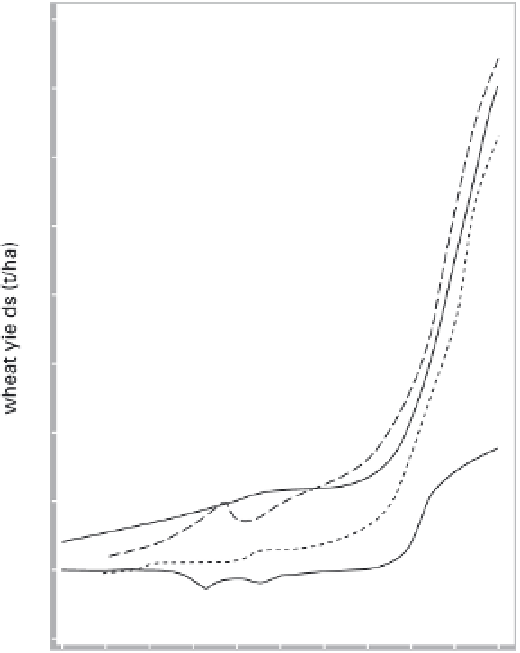Environmental Engineering Reference
In-Depth Information
countries of sub-Saharan Africa to the double-cropped
rice fields in Jiangsu or Hunan, where rates surpassed
500 kg N, 50 kg P, and 100 kg K/ha (NBS 2000). As
already noted (see section 10.2), global production of
inorganic fertilizers claimed about 5 EJ in 2000, or less
than 1.5% of global TPES. And even if all energy for the
Haber-Bosch synthesis came from natural gas, that claim
would have equaled less than 5% of the fuel's annual
global consumption. Clearly, there is little reason to
worry either about current needs or future supplies of
energy for nitrogen fixation. Energy equivalent to that
demand could be gained by relatively small efficiency
improvements of natural gas combustion in industrial
boilers or household furnaces.
Post-WW II expansion of fertilization has been
accompanied by increasing use of herbicides to control
weeds, and insecticides and fungicides to raise the yields
of new high-yielding varieties (Smil 2000b). Both weed
and insect controls started in the mid-1940s, the first
with preparation of 2,4-dichlorophenoxyacetic acid (2,4-
D), a growth-regulating substance that selectively kills
many broad-leaved plants without serious injury to crops,
the other with the commercial introduction of dichloro-
diphenyl-trichloroethane (DDT) (fig. 10.10). Since then
more than 50,000 pesticide products have been regis-
tered to fit thousands of specific applications, but the
bulk goes to only a handful of crops. Pesticide applica-
tions are highly effective and economically rewarding. Al-
though the compounds are derived by energy-intensive
processes from petrochemical feedstocks, their low appli-
cation rates translate to only minor subsidies in absolute
terms.
Synthesis of common active ingredients typically re-
quires 100-200 MJ/kg, and total energy costs, includ-
ing formulating, packaging, and marketing, are mostly
10.9 Long-term trends in staple grain production: English,
Dutch, French, and U.S. wheat yields, 1820-2000. Based on
Smil (1994) and FAO (2006).
States in the 1930s) and of high-yielding wheat and rice
cultivars (developed at CIMMYT and IRRI during the
1950s and 1960s) could take full advantage of intensive
fertilization, and the use of all macronutrients grew expo-
nentially, as did average grain yields (fig. 10.9).
By the year 2000 average global N, P, and K applica-
tions were, about 53 kg/ha, 9 kg/ha, and 12 kg/ha, re-
spectively, but these means concealed a wide range of
values ranging from no or minimal applications in most
























